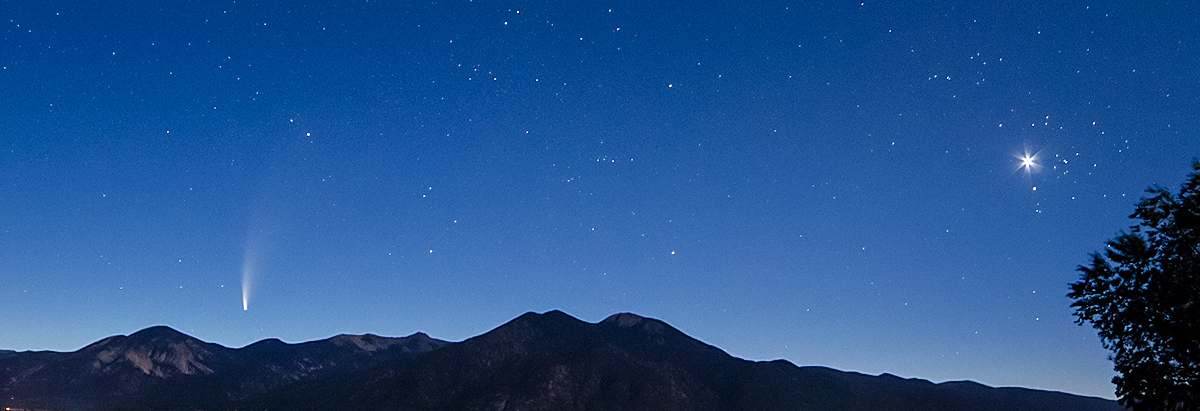
Welcome to taosastronomer.com!
offering
local "hands-on" observing
(visual and imaging) sessions and instruction
viewing and imaging from Rabbit Valley Observatory
a dark sky location on the mesa just west of Taos, NM
Image obtained October 02-03, 2019 through RVO's Explore Scientific’s 127mm ES127ED APO refractor resulting in an 952mm f/7.5 optical system and incorporating a Hotech field flattener -- using a Baader-modified Canon XSi DSLR and BackyardEOS image-acquisition software – 15 of 20 carefully selected and stacked 180-second RGB frames combined with multiple dark, flat and bias calibration frames shot at ISO 400 and totaling almost 100 minutes (45 minutes effective luminance) were used to create this image; optics driven by the Losmandy G-11 mount equipped with Ovision's precision RA worm gear, guided with a ZWO ASI 120MM Monochrome CCD camera through a 60mm guidescope using PhD2 guiding software and post-processed with DeepSkyStacker, CCDStack2 (DDP and deconvolution) and Photoshop CS5 s/w. Photographer's note: It is informative to compare this image above, taken with the superior Explore Scientific apochromatic refractor (3 optical elements, virtually no false color fringing) with my previous images of similar objects, such as the Pleiades. This previous image of the other cluster as linked here, although beautiful and quite colorful, was captured with a high quality but nevertheless a 2 optical element Williams' Optics Megrez achromatic refractor. The difference in the detail (especially noting the stars' lack of significant fringing coloration (halos around stars) and general resolution and resultant smaller star size) is extraordinary, due in part to the larger objective lens -- 127mm vs. 80mm -- but also due to the optical type (apochromatic vs. achromatic). Click this link for a discussion of telescopic lens optics. Also, in the case of the magnificent globular cluster M13, the computer post-processing steps necessary to end up with a acceptable shot was very extensive. The Dumbbell Nebula above required no such rigor in post-processing -- the photographs straight out of the camera were really quite good, requiring really only stacking and calibration; with only some minor Photoshop adjustments.
[copyright Rabbit Valley Observatory/Willis Greiner, 2019 -- all rights reserved]
|
(all content copyright 2015-2019 Willis Greiner Photography, all rights reserved)